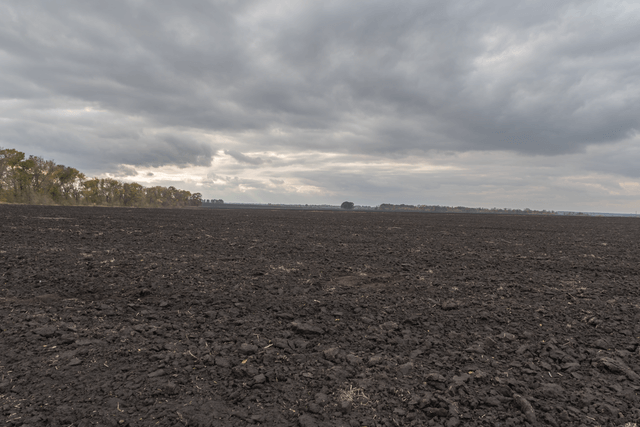
The fading sounds of the natural world could soon render what were once vibrant soundscapes into mere “acoustic fossils,” according to international experts.
This looming silence underscores the urgent need to combat environmental degradation. Ecoacoustics, the study of natural sounds, plays a crucial role in measuring ecosystem health and biodiversity. Forests, soils, and oceans all possess unique acoustic signatures that are becoming alarmingly subdued as biodiversity diminishes globally. The once familiar sounds of bird songs at dawn, mammals rustling through underbrush, and the summer buzz of insects are gradually disappearing.
Today, tuning into some ecosystems reveals a “deathly silence”, said Prof Steve Simpson from the University of Bristol. “It is that race against time – we’ve only just discovered that they make such sounds, and yet we hear the sound disappearing.”
“The changes are profound. And they are happening everywhere,” said US soundscape recordist Bernie Krause, who has taken more than 5,000 hours of recordings from seven continents over the past 55 years. He estimates that 70% of his archive is from habitats that no longer exist.
Professor Steve Simpson from the University of Bristol notes that in many ecosystems, an ominous silence has set in. Bernie Krause, who has documented natural soundscapes across seven continents over 55 years, finds that 70% of his recordings come from habitats that are now vanished.
Similarly, Professor Bryan Pijanowski of Purdue University, with 40 years of experience in ecoacoustics, has captured sounds from almost all major global ecosystems, documenting their changes and quieting.
He said: “The sounds of the past that have been recorded and saved represent the sounds of species that might no longer be here – so that’s all we’ve got. The recordings that many of us have [are] of places that no longer exist, and we don’t even know what those species are. In that sense they are already acoustic fossils.”
The decline in natural acoustics is pervasive, affecting air, forests, soils, and marine environments. During the Cold War, the US Navy’s underwater surveillance systems, used to detect Soviet submarines, encountered difficulties near vibrant coral reefs due to their rich acoustic activity. It wasn’t until 1990 that these sounds were accessible to civilian scientists.
“Whenever we went to a healthy reef it blew our minds – the cacophony of sounds we heard,” said Simpson, who has been monitoring coral reefs using hydrophones for more than 20 years. “A healthy reef was a carnival of sound.”
The coral reefs, once bustling with life, now succumb to silence following severe bleaching events in 2015 and 2016 that killed 80% of some coral populations. Since 1950, over half of the world’s coral reefs have been lost, and a temperature rise to 2°C would threaten over 99% of these ecosystems.
The result of these bleaching events is a “deathly silence”, said Simpson. “We swam around those reefs crying into our masks.”
“These sounds and silences speak back to us like in a mirror,” said Hildegard Westerkamp, a Canadian sound ecologist who has been recording soundscapes for half a century, during which time wildlife populations have experienced average declines of almost 70%.
She started working on the World Soundscape Project in 1973 with the intention of documenting disappearing ecosystems. “We proposed to start to listen to the soundscape, to everything, no matter how uncomfortable it may be – how uncomfortable the message.”
She said: “The act of listening itself can be both comforting and highly unsettling. But most importantly it tends to connect us to the reality of what we are facing.”
These changes have motivated a surge in ecoacoustic monitoring, fuelled by more sophisticated and affordable recording technologies, and a growing awareness of environmental threats. Researchers are now employing advanced microphones to capture sounds that are typically inaudible to the human ear.
Swiss acoustic ecologist and sound artist Marcus Maeder explores the sounds of trees under stress by inserting microphones into their bark, listening to the pulses from within. He discovered a whole “new kingdom of sounds” when he first placed a microphone in the soil of a mountain meadow.
However, intensively managed agricultural land, often doused with pesticides, sounds very different, Maeder said: “The soil becomes quiet.”
The disappearance of these natural soundscapes not only represents a loss of scientific data but also a source of profound grief for researchers.
“It’s a sad thing to be doing, but it’s also helping me tell a story about the beauty of nature,” said Pijanowski. “As a scientist I have trouble explaining what biodiversity is, but if I play a recording and say what I’m talking about – these are the voices of this place. We can either work to preserve it or not.
“Sound is the most powerful trigger of emotions for humans. Acoustic memories are very strong too. I’m thinking about it as a scientist, but it’s hard not to be emotional.”
——————————————————————————
At Natural World Fund, we are passionate about stopping the decline in our wildlife.
The decline in our wildlife is shocking and frightening. Without much more support, many of the animals we know and love will continue in their decline towards extinction.
When you help to restore a patch of degraded land through rewilding to forests, meadows, or wetlands, you have a massive impact on the biodiversity at a local level. You give animals a home and food that they otherwise would not have had, and it has a positive snowball effect on the food chain.
We are convinced that this is much better for the UK than growing lots of fast-growing coniferous trees, solely to remove carbon, that don’t actually help our animals to thrive.
This is why we stand for restoring nature in the UK through responsible rewilding. For us, it is the right thing to do. Let’s do what’s right for nature!
Donate today at https://naturalworldfund.com/ and join in the solution!

